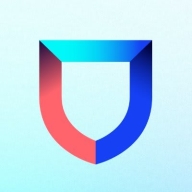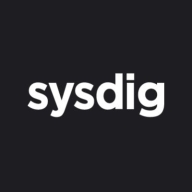


Sysdig Secure and Lacework FortiCNAPP are competing products in the cloud security market. Lacework FortiCNAPP seems to have the upper hand due to its advanced security analytics and threat detection capabilities.
Features: Sysdig Secure offers robust container security, compliance checks, and runtime protection, providing comprehensive security for Kubernetes environments. Lacework FortiCNAPP enhances security with detailed threat intelligence, anomaly detection, and integrated vulnerability management to improve visibility and proactive measures.
Room for Improvement: Sysdig Secure could benefit from expanding its threat detection capabilities and improving its security analytics features. Additionally, enhancing its vulnerability management interface for better user experience could be considered. Lacework FortiCNAPP may improve in reducing noise in its alerts and further refining its compliance reporting tools. More efficient handling of non-critical vulnerabilities can also benefit its overall functionality.
Ease of Deployment and Customer Service: Sysdig Secure is noted for its smooth integration with existing DevOps tools and quick deployment within CI/CD pipelines. Its customer service effectively assists in optimization. Lacework FortiCNAPP offers automatic deployment with extensive documentation, coupled with responsive customer support, making it user-friendly for straightforward setup processes.
Pricing and ROI: Sysdig Secure is cost-effective with competitive ROI for cloud-native application users. Lacework FortiCNAPP requires a higher initial investment, but its advanced security insights offer substantial long-term ROI for enterprises that prioritize in-depth security analytics.
| Product | Market Share (%) |
|---|---|
| SentinelOne Singularity Cloud Security | 4.6% |
| Sysdig Secure | 3.1% |
| Lacework FortiCNAPP | 2.7% |
| Other | 89.6% |



| Company Size | Count |
|---|---|
| Small Business | 44 |
| Midsize Enterprise | 21 |
| Large Enterprise | 53 |
| Company Size | Count |
|---|---|
| Small Business | 4 |
| Midsize Enterprise | 4 |
| Large Enterprise | 3 |
| Company Size | Count |
|---|---|
| Small Business | 5 |
| Midsize Enterprise | 2 |
| Large Enterprise | 3 |
SentinelOne Singularity Cloud Security offers a streamlined approach to cloud security with intuitive operation and strong integration capabilities for heightened threat detection and remediation efficiency.
Singularity Cloud Security stands out for its real-time detection and response, effectively minimizing detection and remediation timelines. Its automated remediation integrates smoothly with third-party tools enhancing operational efficiency. The comprehensive console ensures visibility and support for forensic investigations. Seamless platform integration and robust support for innovation are notable advantages. Areas for development include improved search functionality, affordability, better firewall capabilities for remote users, stable agents, comprehensive reporting, and efficient third-party integrations. Clarity in the interface, responsive support, and real-time alerting need enhancement, with a call for more automation and customization. Better scalability and cost-effective integration without compromising capabilities are desired.
What are SentinelOne Singularity Cloud Security's standout features?SentinelOne Singularity Cloud Security is deployed in industries needing robust cloud security posture management, endpoint protection, and threat hunting. Utilized frequently across AWS and Azure, it assists in monitoring, threat detection, and maintaining compliance in diverse environments while providing real-time alerts and recommendations for proactive threat management.
Lacework FortiCNAPP provides robust cloud security, combining vulnerability management and multi-cloud insight with user-friendly controls, machine learning detection, and compliance support.
Lacework FortiCNAPP specializes in cloud security by merging machine learning anomaly detection with agent-based vulnerability management to offer detailed alerts and compliance reports. Its comprehensive approach allows continuous monitoring across AWS and Kubernetes, providing insights from an attacker's perspective. The platform offers automation and seamless Slack integration, facilitating collaborative and efficient cloud security management. Users value its ability to handle multi-cloud environments and scan IAC scripts, configurations, and compute nodes across AWS and GCP.
What are the key features?Organizations across sectors leverage Lacework FortiCNAPP for cloud security, focusing on compliance, security posture, and vulnerability management. It is widely used for monitoring AWS and Kubernetes environments, scanning IAC scripts, configurations, and securing compute nodes. It supports multi-cloud security posture management and log ingestion, enabling companies to maintain strong cloud infrastructures without dedicated security layers.
In the cloud, every second counts. Attacks move at warp speed, and security teams must protect the business without slowing it down. Sysdig stops cloud attacks in real time, instantly detecting changes in risk with runtime insights, a unique AI architecture, and open source Falco. Sysdig delivers live visibility by correlating signals across cloud workloads, identities, and services to uncover hidden attack paths. By knowing what is running, teams can prioritize the vulnerabilities, misconfigurations, permissions, and threats that matter most. From prevention to defense, Sysdig helps enterprises move faster and focus on what matters: innovation.
Sysdig. Secure Every Second.
We monitor all Cloud-Native Application Protection Platforms (CNAPP) reviews to prevent fraudulent reviews and keep review quality high. We do not post reviews by company employees or direct competitors. We validate each review for authenticity via cross-reference with LinkedIn, and personal follow-up with the reviewer when necessary.